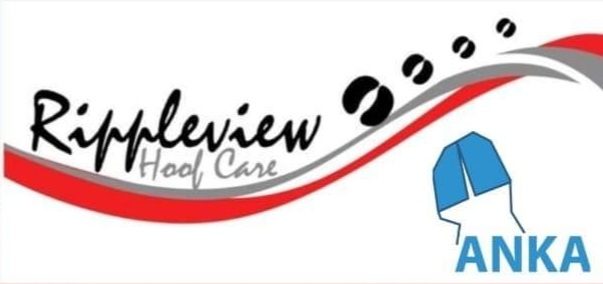Dairy producers should evaluate the time budget of their herd since poorly managing cow behavior can have a significant impact on milk production and health.
Dairy producers can improve management and handling strategies to increase cow performance by focusing on key factors that impact the animal’s daily needs. Examples of limiting a time budget include extended time out of the pen, excessive headlock time, feed bunk mismanagement and poor pen maintenance.

Great genetics and a well-fed herd are critical to an operation, but if a cow’s time is mismanaged, she’ll never reach her full potential. Mismanaged time is a prevalent problem among at least 60 percent of dairies, according to our experience.
The time spent resting and feeding will likely be reduced when a cow becomes limited in her time budget. Cows that are habitually deprived of ample rest time will ultimately choose lying over feeding. Reduction of feeding time could potentially result in lower feed intake and reduced milk production. For example, breeding pens that are locked up for excessive amounts of time waiting to be bred or checked are the most at risk.
Figure 1 shows a daily time budget for lactating dairy cows in a freestall environment.
Studies done by the Miner Institute, led by Dr. Rick Grant, show “elite cows,” those that are in the top 10 percent, spent a total of 14.1 hours per day resting and 5.5 hours eating. While resting is critical for production and beneficial to foot health and reducing lameness, our survey of herds found average resting time was around 11.5 hours a day, well below the 14-hour allotment given to cows with the most productive milk yields.
For dairies that want to increase their production and bottom line, a strong nutrition plan combined with thoughtful management practices will lead to the best outcome for both the herd and profitability.
The following factors have a direct impact on your herd’s productivity:
Extended time outside of the pen
It’s not a secret that cows prefer to ruminate while lying down. The more time a cow spends outside of the pen, the less time is available for her daily needs of rest and rumination. Time away from the pen will also reduce time for feeding and socializing.
Any activity that takes away from a cow’s ability to choose her actions – eating, drinking or lying down – means a reduction in the best possible time budget. For many dairies, this comes down to a more efficient milking strategy, as well as taking care to ensure cows can return quickly to their pen.
Take action:
1. Evaluate your herd’s schedule and your standard operating procedure for milking to find efficiencies.
2. Implement protocols with employees, or consider adding another employee to keep the schedule moving efficiently.
3. Schedule breeding, vet and health checks to be done after cows return from milking.

Excessive lockup times
The survey done on Idaho dairies showed management practices were limiting resting time due to prolonged headlock stanchion use. Over a seven-day period, the average stanchion lock time was two hours and 53 minutes, with a maximum of three hours and 31 minutes.
When cows are locked up for a long time, they will neglect feeding and other activities to rest. Research suggests for every three and a half minutes of lost rest, cows sacrifice one minute of eating. Dry matter intake and milk production go hand in hand – if a cow decides not to eat because she’s been standing all day long, she may not produce the desired level of milk to compliment her genetics as well as her nutritional program.
It takes 30 to 45 minutes to fill the rumen, and the majority of rumination takes place when a cow is lying down. One of the ways you can tell if your herd is being managed to meet the cow’s needs is to watch what happens when you release a group of cows from headlocks. It’s a good sign if they continue to stay and eat, but if they bolt to water or lie down, you’ll need to adjust their schedule.
This can be a challenge with milking schedules and time spent outside the pens. Fresh cows are especially at risk for time budget challenges. The hormonal imbalance softens tissues in their hooves, which can easily lead to lameness if they are on their feet for long periods of time.
Take action:
1. Lockup times should be reduced to no more than two hours.
2. Schedule lockup times to coincide with feedings and push cows to the bunk, rather than set the locks three hours prior to the event that is supposed to take place.
3. Always make sure fresh feed is plentiful during lockup times.

Feed bunk mismanagement
Our survey included the use of time-lapse cameras and revealed late-night feed pushups were not occurring on a regular basis at many of the dairies. There was also a tendency for feed to become unavailable during the night.
While this may not sound like a big problem, the cows were returning from the parlor to an empty bunk. The prolonged feed outage caused the cows to continue to run out of feed during the next day at various points since they were trying to compensate for low feed delivery.
Cows love consistency and have a hard time readjusting. They like to know they can milk, eat fresh feed and then rest. To appease the cow’s normal time budget, it’s important to feed them at the exact same times every day.
Take action:
1. Push up feed during day and night, ensuring feed is always plentiful.
2. Provide adequate feed for overcrowding, as the energy requirement per cow will be greater.
3. Look down the feed alley after cows have been locked up for 45 minutes to see what percentage are eating versus just standing there. Adjust the schedule accordingly.
Poor pen management
Mismanagement exists on dairies of all sizes. Your employees will play a large role in the comfort of your herd.
Many dairies have good corral management, but it’s done at the wrong time for optimal productivity. When a group of cows go up to milk, make sure someone scrapes the corrals and alleyways and cleans up the pens. It’s best to minimize pushing cows out and away from feed to clean an alley, or disturb them from rest to harrow a corral.
Running a dairy with fewer employees can make managing the time budget difficult. The daily flow of activities must be managed as efficiently as possible so your herd has plenty of time to rest and eat.
Take action:
1. Manicure feed alleys and harrow corrals while cows are milking.
2. Supply shade and soft bedding in the summer and a warm, dry environment in the winter in order for cows to be comfortable lying down.
3. Enlist the help of your team – employees, nutritionists, vets, etc. – and start making changes to your dairy’s schedule to see big results in the health and productivity of your herd.
Changes in cow comfort will make a large impact over time, especially when it comes to creating a better time budget for your herd. A perfect day for a dairy cow consists of plenty of time to rest, the ability to socialize, and access to fresh feed and water. Small shifts in a dairy’s time management can cause problems and should be evaluated regularly to accommodate any drift from normal protocol. ![]()
Mitch Theurer and Mike Brady are dairy nutrition consultants with Standard Dairy Consultants. Email Mitch Theurer or email Mike Brady.
Standard Dairy Consultants provides nutritional and management consulting services and is a division of Standard Nutrition Company, which blends custom dairy mineral and vitamin supplements.








